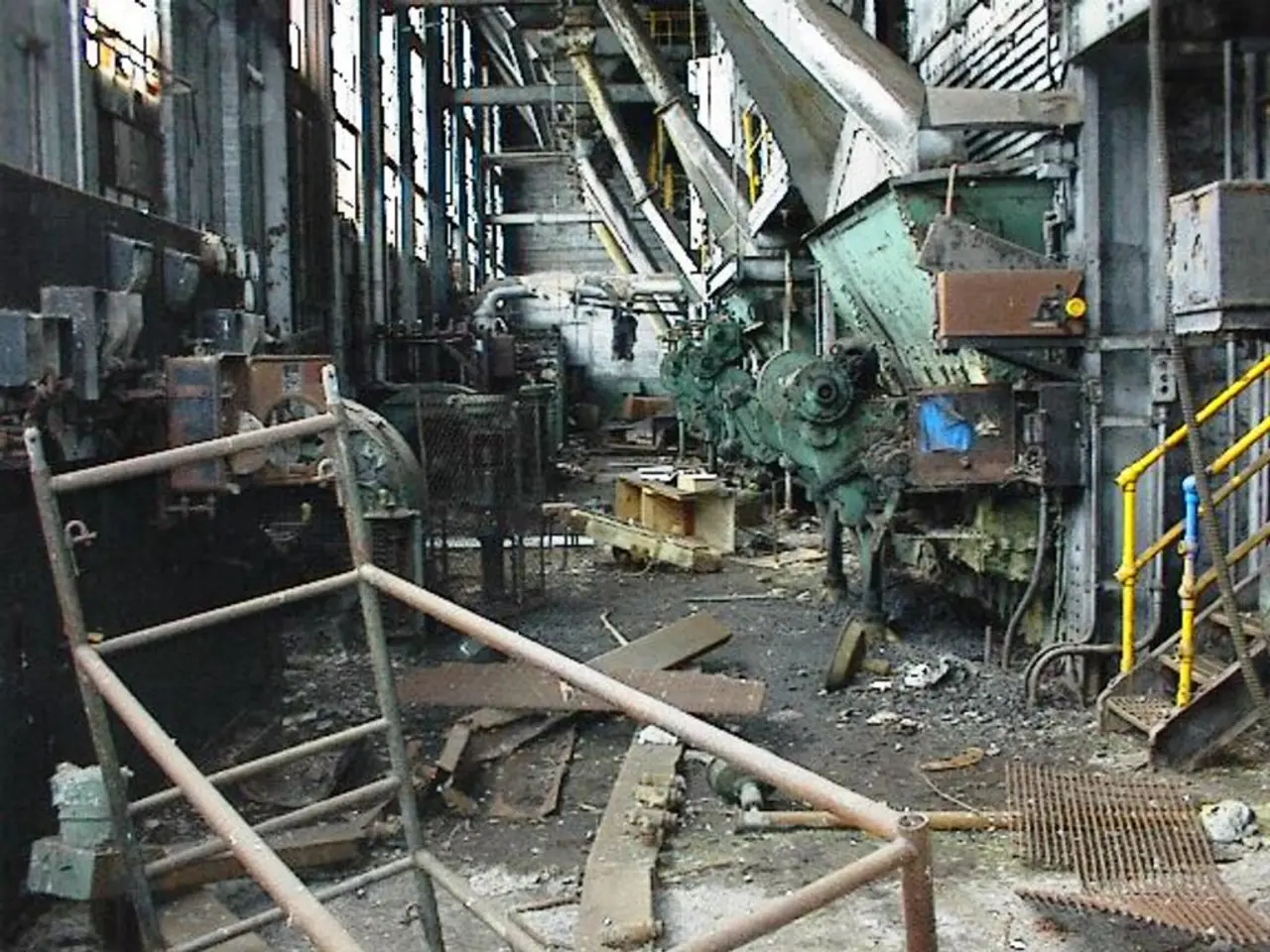Gold might hit a fresh record-breaking peak this year.
Why Gold Still Shines Bright: Mark Valek's Optimistic Outlook on Inflation and Gold Prices
Meet Mark Valek, a partner at Liechtenstein's wealth manager Incrementum, overseeing portfolio management and research. Prior to joining Incrementum, he spent a decade working at Raiffeisen Capital Management as a fund manager specializing in inflation protection and alternative investments. Since 2013, Valek has collaborated with Ronald-Peter Stöferle as a co-author of the "In Gold We Trust" report, Incrementum's annual gold report.
BIZZONLINE: Hey, Mark, gold's reputation as a haven during crises and an inflation hedge seems to have faltered recently, considering the pandemic, supply chain issues, high inflation, stock volatility, and the Ukraine conflict. Gold prices have dropped significantly since March. What gives?
Mark Valek: You hit the nail on the head. The past year has been a doozy. Gold's holding up remarkably well, particularly in euros. In dollars, it's actually in the red this year, but less than most stock indices or bond investments. Nevertheless, it's not impressing everyone. The main culprit: the drastic shift in interest rates in the US, which sent shockwaves through all asset classes. Investors seem hopeful that central banks, especially the Fed, will tame the inflation beast soon, reducing its longevity.
2021 wasn't exactly a goldfree zone.
Indeed. Gold isn't a crystal ball; it looks to the future. For instance, in 2020, during the corona crash when massive aid and central bank balance sheets ballooned globally, gold prices soared quickly. However, the financial powers-that-be declared that the inflation surge was only temporary. After August 2020, the gold bull ran on the shelve, at least partially, due to this sentiment.
Could we have peaked inflation now? Whats next for gold?
Interesting question given the Fed's recent skyward interest rate moves. This likely brings a temporary decrease in inflation. At Incrementum, we develop our unique inflation signal, which suggests that the rising inflation momentum might have stalled for now. Commodity prices and inflation rates priced in by inflation-indexed bonds have dwindled in recent weeks. The strength of the dollar is another indicator for falling inflation. All these signs suggest a decline in inflation in the short or medium term.
But you anticipate stagflation on the horizon.
Stagflation is here, big time. The US has officially plunged into a technical recession: GDP has contracted for two consecutive quarters, and we're still grappling with high inflation rates. The classical definition of stagflation is low or negative growth combined with high inflation. The question is not if stagflation is coming, but rather how long it will last. We anticipate seeing waves of inflation in the medium term. The first wave could be nearing its end, and the second wave may signal a pause in interest rate hikes in the US, as inflation rates ease, or oil prices continue to dip. With a shaky economy, the central bank may struggle to hike interest rates further.
So no signs of low inflation anytime soon?
Our 2021 prediction: we're stepping into an inflationary decade. The post-COVID era trash-canned any fiscal restraint, making debt seem irrelevant and printing money a limitless endeavor. The Ukraine war amplified this. We reckon it's highly unlikely for stable inflation rates of 2% to return in the long term, given the ongoing deglobalization, intense rearmament, and a paradigm shift in the entire energy industry.
But what if central banks keep hiking interest rates?
The biggest 2022 question: how much further can they go? The ECB is already grappling with high public debt in some Eurozone countries, making bold moves a challenge. If interest rates become too steep, a Euro crisis 2.0 may unfold, as southern Eurozone countries might struggle with financing. The US is also in deep debt. A byproduct of interest rate hikes is a possible recession, as seen in the US. Will the ECB really strain economic growth to restore monetary stability? But if interest rate hikes continue or surge, that would indeed be the gold investor's worst nightmare.
You're predicting a gold price of $4,800 by 2030, around 170% higher than today. You're not expecting this risk scenario?
Exactly, our 2020 target still stands, and we've more or less kept to it. We don't anticipate significantly high positive real interest rates resurfacing, which ultimately depends on interest rates. Even if inflation drops to 5%, you'd need 7% interest rates to yield 2% real interest rates. I believe that would eventually crack the Eurozone. In the 2011 Euro crisis, we discussed Italy's "death zone" of 6% yields. Italy's debt is now much higher, making refinancing too costly in case yields spike. That's why we might appear a tad reckless to some.
Yes, but that assumes the Fed pauses its interest rate hikes. However, at their last meeting, there were hints pointing towards a more relaxed monetary policy. Gold has reacted positively. If we were to approach the pause button, even if there's still one or two more hikes, but smaller than currently projected, that could give gold a much-needed lift. Currently hovering around $1800, it's just 15% shy of its all-time high. Such an increase remains possible by the year's end.
Gold may not provide regular income. What role does it play in your investment strategy?
Gold remains the top currency for value storage and exchange; currency doesn't bring in interest. Once you start earning interest, you're taking on risks like counterparty risk from a bank or bond issuer, or company risk associated with dividends. Gold is purely an asset with no bankruptcy risk, and it will increase in value long term in a fiat currency system since the money supply is regularly expanded faster than the gold supply. There are numerous studies that back the notion of holding a portion of gold in your portfolio. Gold often moves in the opposite direction of stocks or bonds.
How much gold should you invest in?
That's a personal choice. We distinguish between safety gold and performance gold. Safety gold shouldn't be considered part of your portfolio; it should be held physically as a real emergency fund, stored securely nearby. Performance gold can also be a liquid asset like an ETF. If you're seeking leverage, you can invest in mining stocks, futures, or options. We believe the classical 5-10% gold in the portfolio is too modest for the current environment, allowing for more than 10%. But don't overdo it and remember the importance of diversification.
How do you currently assess the situation of gold producers? Inflation affects them too.
We've seized the recent price drops to make substantial purchases and currently have the largest position in gold miners in our Inflation Diversifier Fund. Miners are grappling with inflation on the cost side, but if the overall scenario unfolds as we predict—falling energy prices and rising gold prices—these are excellent opportunities for us. It's currently a highly countercyclical investment, as these stocks have halved in value since March and are now deeply out of favor. We've partially hedged these positions using put options to hedge our bets. After all, it could always go the other way.
- Mark Valek, despite the drop in gold prices since March, believes that gold still has potential as an inflation hedge, particularly in euros.
- In 2020, gold prices soared quickly during the corona crash due to massive aid and central bank balance sheets ballooning globally, but the financial powers-that-be declared that the inflation surge was only temporary, which contributed to the gold bull running on the shelf.
- Incrementum's unique inflation signal suggests that the rising inflation momentum might have stalled for now, but the team expects waves of inflation in the medium term, with the first wave potentially nearing its end.
- Valek and his team are predicting an inflationary decade, given the ongoing deglobalization, intense rearmament, and a paradigm shift in the entire energy industry, and they anticipate a gold price of $4,800 by 2030.




